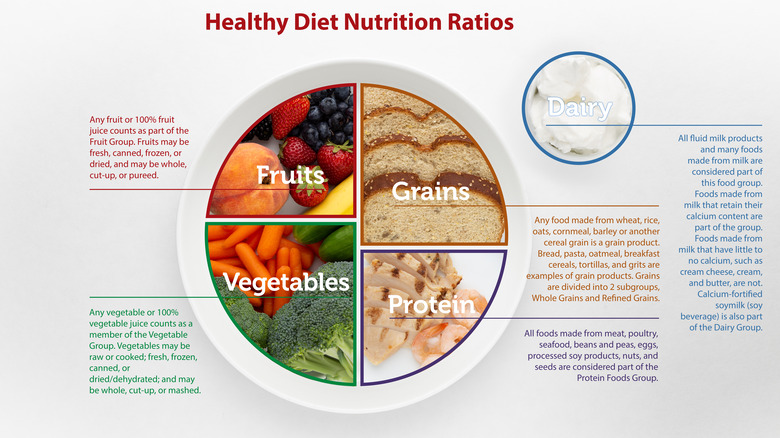The Real Reason They Got Rid Of The Food Pyramid
Over the years, the food pyramid has been placed in many doctor's offices and school cafeterias across the country to educate kids and adults alike on the importance of balanced nutrition. First released in 1992, the old food pyramid took the form of a triangle split into various sections each designated to a particular food group (via Verywell Family). Further broken down by serving size, it became clear over time that the pyramid did not adequately illustrate how these amounts would vary due to different factors such as age, activity level, and individual calorie needs. Though the food pyramid has been revised over the years, the confusion has remained. As a result, the food pyramid has been done away with within the last decade and a new image has taken its place.
Because much of the confusion stemmed from uncertainty over serving size, many people were unknowingly consuming more than the recommended daily amounts of certain food groups, such as grains. One example given by experts at Verywell Family is in the form of a sandwich. They clarify that the two pieces of bread used in a sandwich each count as a serving rather than one total serving.
MyPlate replaced the food pyramid and focuses on portions over serving size
Additionally, the use of a pyramid image turned out to be rather misleading as some mistakenly interpreted the bottom of the chart as what to avoid and the food groups towards the top to be considered best (via Harvard Health Publishing).
In 2011, a new educational tool emerged in the form of an everyday relatable visual: a plate (via MedicineNet). This new tool came to be known as MyPlate and focused on portions over serving size. The plate is divided into four sections of varying sizes and colors to illustrate roughly how much of that food group should occupy your plate, with the largest sections being vegetables and grains. One of the many benefits of this new visual is that unlike some representations of the old food pyramid, it does not illustrate meat as the sole source of the protein group. Instead, MyPlate utilizes the word "protein" in addition to the word "meat" to widen the net and include food items such as beans, nuts, or soy.
Though some nutritionists still see room for improvement, such as the need for clearer differentiation between what kinds of grains are healthier than others, many experts believe MyPlate is still a significant step up from the former food pyramid. With experts continuing to educate the public on information surrounding health and nutrition, we can work to lower rates of diet-related health conditions such as heart disease, diabetes, and more.


